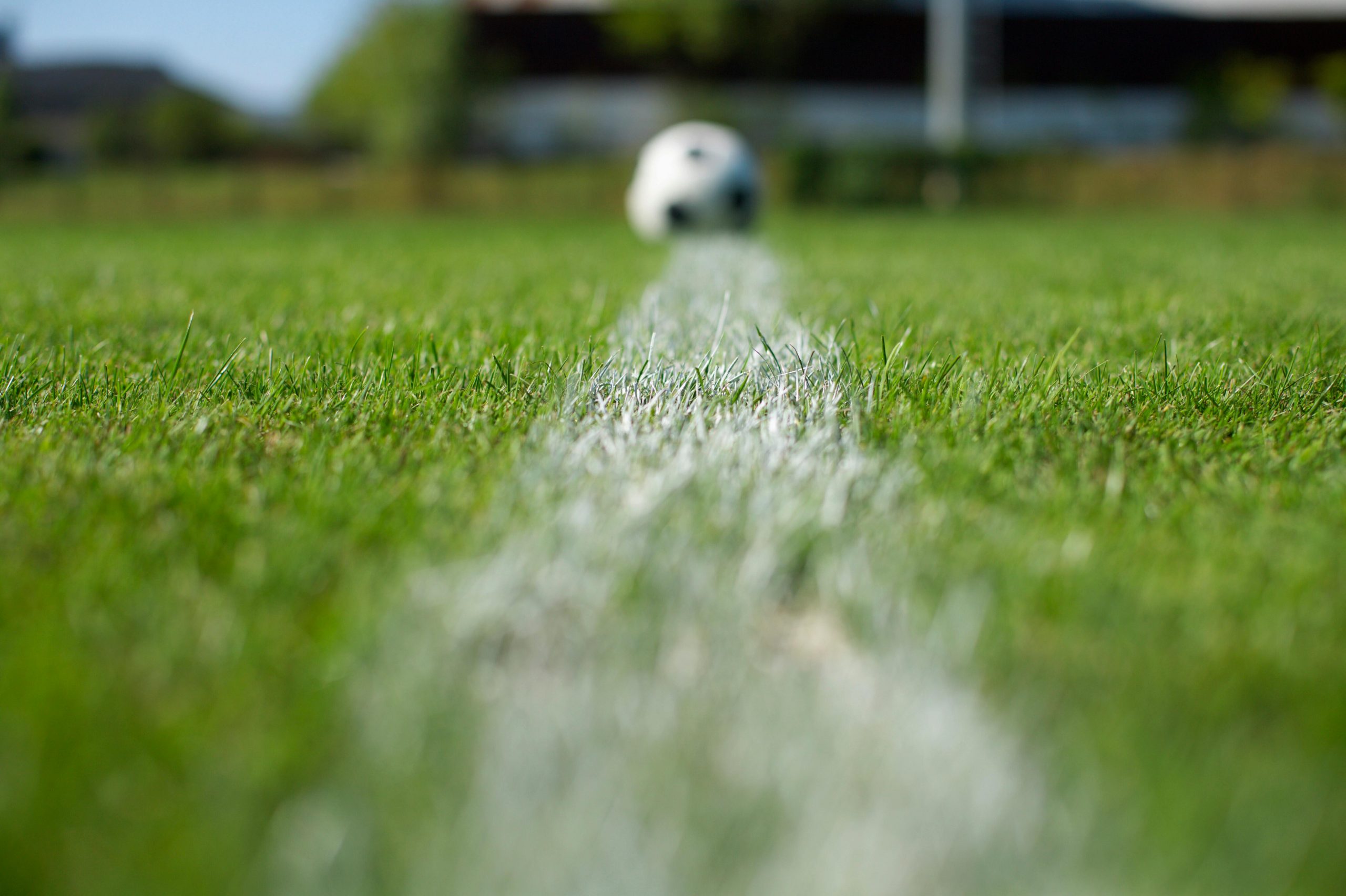A sport that keeps creating new records and shattering the old ones, football is nothing short of a miraculous game. It’s an age-old phenomenon with historical origins dating back to the Mesoamerican cultures but with different variations.
The football we play today was born in England in the 19th century and since then, the popularity of men’s and women’s football has only kept rising. In fact, football is rated #1 in terms of global popularity, drawing interest from more than 40% of people, worldwide. And all the magic of this popular game happens on the football pitch.
If you are here, you are either a curious fan looking for answers, a professional trying to understand the football pitch dimensions for marking it or just a rookie to the game. Then this is your go-to guide packed with all answers. So, let’s get kicking and get some answers, shall we?
FA Approved Football Pitch Dimensions, Markings and More
Football can be played anywhere, even on the streets, with no particular dimensions or markings. But when played professionally, it has to follow the FA-recommended dimensions. The league that is being played defines the dimensions of a football pitch. Here’s a simple breakdown so you can grasp how the pitch varies.
5-A-Side Football Pitch
A 5-a-side football pitch is often used for what the FA calls ‘Mini Soccer’. Its recommended length is 40 yards (36.6m) and width is 30 yards (27.5m) for outdoor and indoor pitches. The goal size is around 3 yards (3.66m) wide.
Unlike other pitches, 5-a-side ones have curved penalty areas of 6.5 yards (6m) instead of the regular rectangular boxes. Sometimes, 5-a-side pitches might not have the halfway line or the centre circle, but they definitely have penalty spots. These penalty spots extend 6.5 yards (6m) from the centre of the goal.
Under 7 or 8 games are usually conducted in a 5-a-side fashion and a size 2 ball is used to play.
7-A-Side Football Pitch
The FA-recommended length of 7-a-side pitches is 60 yards (55m) long and 40 yards (36.5m) wide, with a 6-yard (5.5m) radius of the centre circle. The rectangular penalty areas measure 18 yards (16.5 m) in length and 10 yards (9 m) in width. Some 7-a-side pitches don’t have the centre circle but the important penalty spot has to be present, at a distance of 8 yards (7.3 m) from the goal line.
Under 9 or 10 games are usually played in a 7-a-side setting using a size 3 football.
9-A-Side Football Pitch
9-a-side football pitches are ideally 80 yards (73.1m) long and 50 yards (45.7m) wide. The centre circle, which marks the exact midpoint of the field, has a radius of 7 yards (6.4m).
The distance between the goal line and the penalty spot is 9 yards (8.2 m).
While the penalty area arcs are 7 yards (6.4m), the penalty area is 13 yards (11.88 m) in length and 32 yards (29.26 m) in width. On the two ends, the goal area is 4 yards (3.65 m) long and 14 yards (12.80 m) wide. The corner arcs have a 1-yard (0.91m) radius.
Under 11 or 12 games are held in a 9-a-side manner and a size 4 football is used to play.
11-A-Side Football Pitch
According to FIFA, the required dimensions of official 11-a-side pitches are between 100-130 yards (90-120m) in length and 50-100 yards (45-90m) in width. The measurements vary based on the age groups. However, when it comes to professional leagues (men’s or women’s) the measurements are standardised.
Despite the perimeter, interior dimensions remain the same. The centre circle has a radius of 10 yards (9.15m), while the penalty boxes measure 18 yards (16.5m) in length and 44 yards (40.3m) in width. When it comes to the goal area, it’s 20 yards (18.3m) long and 6 yards (5.5m) wide, while the penalty spots are 12 yards (11m) from the goal line.
When it comes to the Under 13 or 14 games, the dimensions are 90 yards (82.2 m) by 55 yards (50.2 m). Under 15 or 16 games have the measurement 100 yards (91.4 m) x 60 yards (54.8 m). Lastly, for the Under 17 or 18 and 18+, 110 yards (100.5 m) x 70 yards (64 m) are the recommended dimensions.
How to Mark a Football Pitch?
 Image credits: SunCatcherStudio
Image credits: SunCatcherStudio
As per FA rules, the width of the marked lines of the pitch for regulated matches has to be 5in (12cm). All the lines should have the same width, while the goal lines have to be just as wide as the goalposts and crossbar. Let’s take a close look at these lines.
Goal Area
The goal area is a 6-yard (5.49m) by 20-yard (18.29m) box that determines where goal kicks can be taken from. If a team wins an indirect free-kick, they cannot take it from inside the opposite team’s goal area.
Penalty Box
The penalty box is the rectangular area where the goalkeeper can touch the ball and it measures 18 yards (16.46m) in length and 44 yards (40.23m) in width. It’s also the area where a penalty kick is granted in case there’s a foul within that box.
Penalty Arc/The ‘D’
The penalty arc is located right opposite the goal post, at the penalty area’s edge. Although it’s not considered a part of the penalty box, all the players of a team taking a penalty (except for the one taking it) have to stand behind the penalty box and arc.
Penalty Spot
The spot where a penalty is taken from is at a distance of 12 yards (10.97m) from the goal line, right at the centre.
Corner Area
The corner arc has a radius of 1 yard (0.91m). When a team is taking a corner kick, defenders of the opposite team have to maintain a distance of 10 yards (9.15m) from the ball till the kick is taken. The corner flags or flagpoles placed at every corner of the pitch are around 1.5m tall.
Halfway Line and Centre Circle
As the name suggests, the halfway line divides the pitch into exactly two parts. On the halfway line is the centre circle and the centre spot is marked precisely in the middle of the circle.
Touchline
The perimeter of a football pitch is called the touchline. Outside the touchline is a 3-yard (2.74m) wide runoff area that has to be free from any obstacle such as a team’s shelter.
A Word About the Football Pitch Surface
 Image credits: BOOM
Image credits: BOOM
Football games should be played on a grass surface, which many associations follow steadfastly. Such football associations have prohibited the use of artificial turfs and encouraged the grass pitch. But in countries with extremely cold climates, especially in the Scandinavian countries, artificial pitches are used to play.
Over a couple of years, the FA has invested quite some amount for the betterment of grass pitches. It has also laid down grass pitch standards that focus on important aspects like grass height, grass coverage, depth of the grass root, percentage of undesirable grasses and weeds, and soil composition.
Pitch Dimensions of Popular English Clubs
Now that you are familiar with the required dimensions for a perfect pitch, let’s look at the pitches of the top English football clubs.
| Club | Home Ground | Dimensions |
| Liverpool | Anfield | 110.5yds (101m) x 74.4yds (68m) |
| Manchester United | Old Trafford | 114.8yds (105m) x 74.4yds (68m) |
| Arsenal | Emirates Stadium | 114.8yds (105m) x 74.4yds (68m) |
| Chelsea | Stamford Bridge | 112.6yds (103m) x 73.2yds (67m) |
| Manchester City | Etihad Stadium | 114.8yds (105m) x 74.4yds (68m) |
| Tottenham Hotspur | Tottenham Hotspur Stadium | 114.8yds (105m) x 74.4yds (68m) |
| Aston Villa | Villa Park | 114.8yds (105m) x 74.4yds (68m) |
| Everton | Goodison Park | 109.9 yds (100.49m) x 74.4 yds (68m) |
| Newcastle United | St James’ Park | 115 yds (105m) x 74.4 yds (68m) |
| Nottingham Forest | City Ground | 115yds (105.2m) x 78yds (71.3m) |


